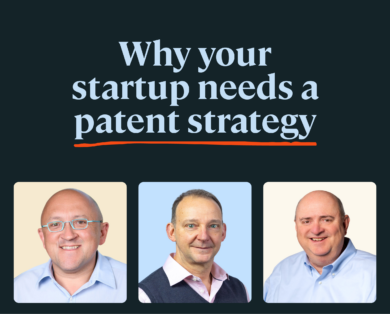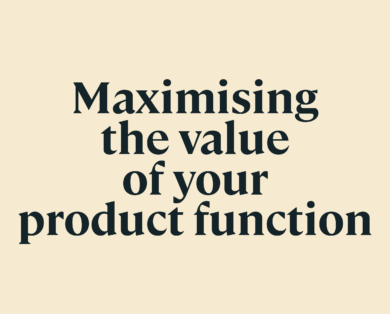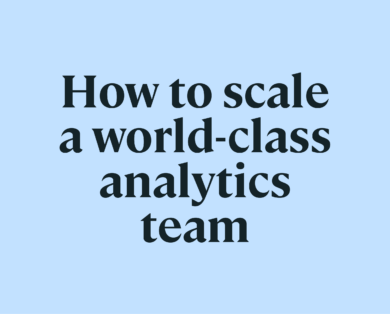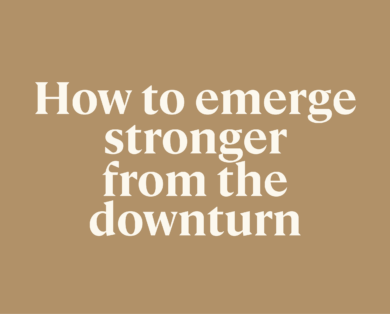- 24 July, 2024
A Conversation with Lars Schmidt
In the last year, as companies everywhere navigated through the global pandemic, we saw HR professionals leading the charge in preparing their teams for the new reality.
With the future of work rapidly becoming the ‘now’ of work and our ways of working permanently evolving, the need to redefine HR is greater than ever before.
Lars Schmidt has been a passionate crusader for the transformation of HR and modern HR practices for the last two decades. He has worked with industry leaders globally and written extensively on the topic. His latest is the groundbreaking new book, Redefining HR.
I sat down with Lars to talk about the future, and the now of work, and why CEOs and business leaders need to transform their People teams to drive business performance.
Here we share some of the key takeaways from the conversation.
Make HR about enablement and empowerment of your team
HR or the People function needs to be in a position to support and enable your employees to do their best work. Modern HR is about designing programmes and practices that allow employees to thrive.
The HR function has gone through a steady evolution over the last decades. Smart companies like Netflix have created a competitive advantage for themselves by ditching cumbersome legacy models and ushering in a new era of People-first practices.
Legacy HR: Rigid structures put in place with the aim of promoting a command and control model.
These models were characterised by over-engineered systems and excessive bureaucracy. Traditional HR leaders viewed their ability to own approvals and processes as a pathway to power. Over time, these rigid rules and restrictions frustrated executives and employees alike, and HR became perceived as the ‘policy police’.
Modern HR: lean and agile structures with the aim of empowering employees.
In modern HR models, there is no insecurity about the value that People leaders bring to the business, therefore there is no need to insert excessive control. Frameworks and guardrails are put in place only to support managers and employees in doing their best work, not to hinder them. CEOs and executives should view HR leaders as partners in the business and as key contributors to the decision-making process.
Essential skills for a people leader today
- Modern HR Experience – a good understanding of proven practices coupled with a propensity for being agile and iterative;
- Business acumen – ability to understand commercial objectives and guide People strategy accordingly;
- Lifelong Learner – a desire to continuously learn and improve themselves and the organisation.
CEOs must take an active role in advancing modern HR practices
A close working relationship between the CEO and the People leader is instrumental. CEOs whose companies weathered 2020 and remained strong, more often than not, had a capable People leader by their side.
It is important for CEOs to recognise the pressures on their People leaders are always exponential, given the nature of the position. This is even more so the case in times of crisis.
It is not only important to give People leaders the space and authority to implement critical changes, but also vital to look out for their well-being. When caring for the team, People leaders are likely to put themselves last and run the risk of burnout.
Heads of People in startups need to be both strategic and tactical
In early-stage companies, when the team is below 100 people, every manager is usually a player-coach – an individual contributor with management responsibilities. HR is no exception.
Managers are required to be hands-on and do some of the day-to-day heavy lifting. At the same time, they need to look six months down the line and make a plan for how to best support their team.
For many Heads of People in startups, this may be their first time making strategic plans and decisions. The ones that succeed in scaling with the company are those who can find the right balance of doing what they know well and learning quickly on the job.
However, as the organisation grows, leaders need to be increasingly more strategic. They need to build a team of specialists on whom they can rely to drive the tactical execution.
Create an environment that supports agile transformation
Historically in HR, creating change required many steps: creating a business case, running a steering committee, researching, benchmarking, etc. This process could easily take months to a year. In the meantime, the external environment would shift in a way that would no longer support the proposed change.
Given the rapid pace of change in the world of work today, organisations need to support People leaders ability to:
- Rapidly iterate
- Build more agile HR and People programmes
- Pilot, test, and scale
- Roll out MVPs as soon as possible
- Get honest feedback from employees in smaller pilot sessions
Having buy-in from the top is critical to the success of agile change management. By the same token, HR leaders need to be excellent negotiators and data-driven decision-makers who are not afraid to experiment. They need to educate the leadership team on People metrics and how they impact the business.
The future of work is here and it is hybrid
The future of work is now. It is unfolding all around us and it is going to be ‘hybrid’. For many tech workers, it is hard to imagine going back to cubicles, to daily commuting, and to inflexible work schedules.
As People leaders design, test, and optimise new work ways of working, the challenge is how to offer personalisation, flexibility, and choice at scale. This is no longer just desirable but essential for tech companies who want to hire and retain top talent.
The 4 Work Operating Models:
- Co-located – all employees physically in the same office.
- Fully remote – all work is done remotely.
- Distributed – all work is done remotely, independent of geography.
- Hybrid – companies create a custom model, blending of co-located and remote work.
Of the various models being considered, the hybrid model is by far the most challenging to construct and manage well. There are too many nuances and interdependencies to consider.
Therefore, even when operating a hybrid model, the best approach is to design all internal operating systems as if for a fully distributed team.
By doing so, companies avoid creating segregated classes of employees, where there is an inherent advantage to those who can come into an office versus those who cannot.
Systems must be re-engineered to design hybrid work constructs that are functional and allow employees to return to work safely. This task falls to the managers and executives as much as it does to People teams.
We have to remember that there is no proven playbook on designing hybrid models of working. However, People leaders and CEOs do not have to develop these solutions in isolation.
In the tech community, there is a continued outpouring of ideas and shared learnings that leaders can tap into to create their custom solutions.
Return to Work – Lars’s crowdsourced guide
Employee engagement is about purpose, communication, and being human
Employee engagement has taken on a whole new dimension since we have been forced to disperse our co-located teams and dramatically reduce daily touchpoints. Zoom coffee chats, zoom game nights, and zoom happy hours do not give us the same level of connection and sense of belonging we could get from a five-minute hallway conversation with our work friends.
On the other hand, we have gotten to know each other in new ways. We logged onto meetings from our bedroom ‘office’, laughed together when puppies and kids inevitably barged in and cried together in very personal and difficult moments.
We are keeping engagement high by being vulnerable. Letting the team know we have normalised an abnormal situation is not normal. By being human, by creating connections to the work we are doing to the future of work at a macro level. Lots of little things, not one silver bullet.
Luno
In a way, humanity has been on full display, and the lines between professional and personal have blurred. We can learn from these experiences and adapt our workplaces to take a more holistic view of the people around us.
What this means is designing cultures based on the core needs we have as humans to be satisfied at work and giving employees clarity and a sense of purpose.
What worked for us is giving the team a clear sense of long term vision and purpose, so that they can see the impact of their work on the overall success of the company rather than thinking they are treading water every day. Giving them very meaty, transformational projects to work on keeps them motivated.
GoCardless
Finally, a few months ago, we also conducted our own research which you can find here, where we found the key levers for engagement in the new world of work were:










